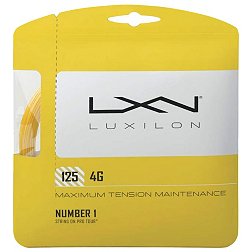Types of Tennis Racquet String
To truly get the most out of your racquet, you should restring the frame as many times per year as you play each week.
The type of tennis racquet string you decide to use also plays a part in the performance of your racquet. Here are some different materials you may want to try:
Monofilament Strings: This is a solid piece of string created from a synthetic material. Monofilament strings are highly durable, but lack the feel, elasticity and comfort of their multifilament counterparts. Try these strings if you're looking for a basic combination of durability, control and spin.
Multifilament Strings: This string is comprised of multiple individual string filaments woven together into a single unit. These filaments are commonly made of nylon and wrapped into a single string with a synthetic binding agent. Players with weaker arms often go for multifilament strings, because they produce an ideal balance of comfort, power and feel.
Synthetic Gut Strings: This nylon-based string has a solid, or monofilament, core, surrounded by layers of smaller filaments. Synthetic gut is a versatile string for players of all skill levels. Its construction offers improved tension, feel and response for perfect all-around playability.
Hybrid Strings: This string varies in thickness between the main and cross strings to provide a blend of string qualities.
Polyester Strings: If you've mastered simple volleys and want to spice things up, polyester string is great for adding spin and allows for maximum control. Plus, this material is super durable.
Natural Gut Strings: Made from cow intestines, natural gut string has been around for centuries. This string type has withstood the test of time because it provides maximum comfort and feel while also allowing for optimal power. It will also maintain its tension longer than most other materials.
The tension of your racquet strings will greatly affect your game. For many players, finding the right tension is a matter of trial and error. Before making your selection, take a look at your racquet. Manufacturers typically test racquets and denote a recommended string tension range on the side of the racquet's frame. This is a good starting point for players of all skill levels.
Try stringing your racquet in the middle of this range during practice. Aggressive, power-hitter players might have to move to the higher end of this range, while others who need more power might opt for the lower end of their tension range.


















































